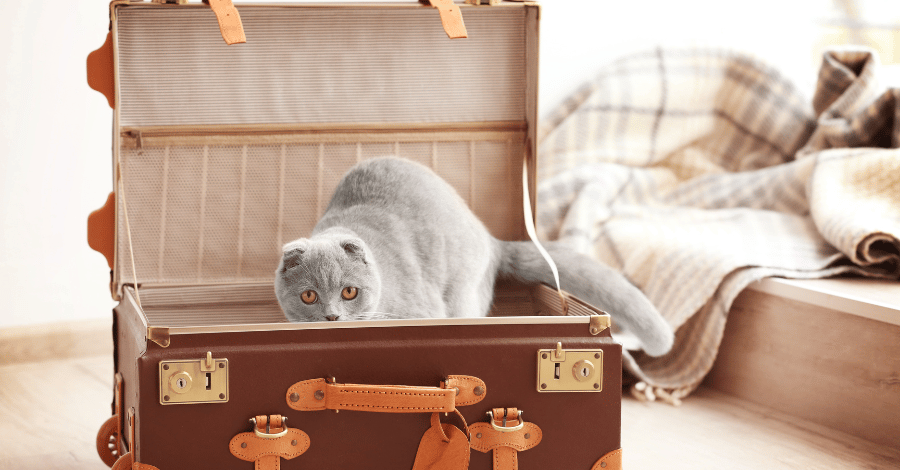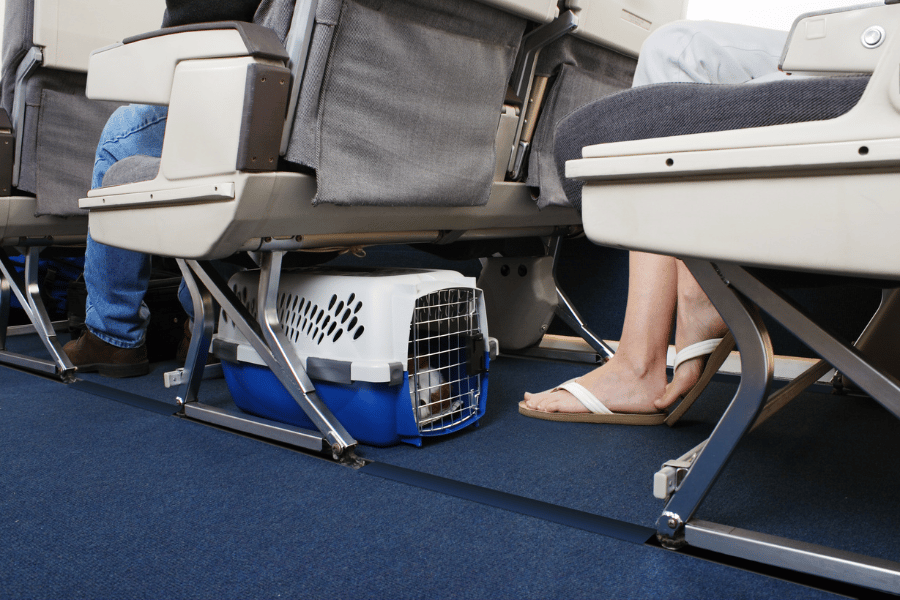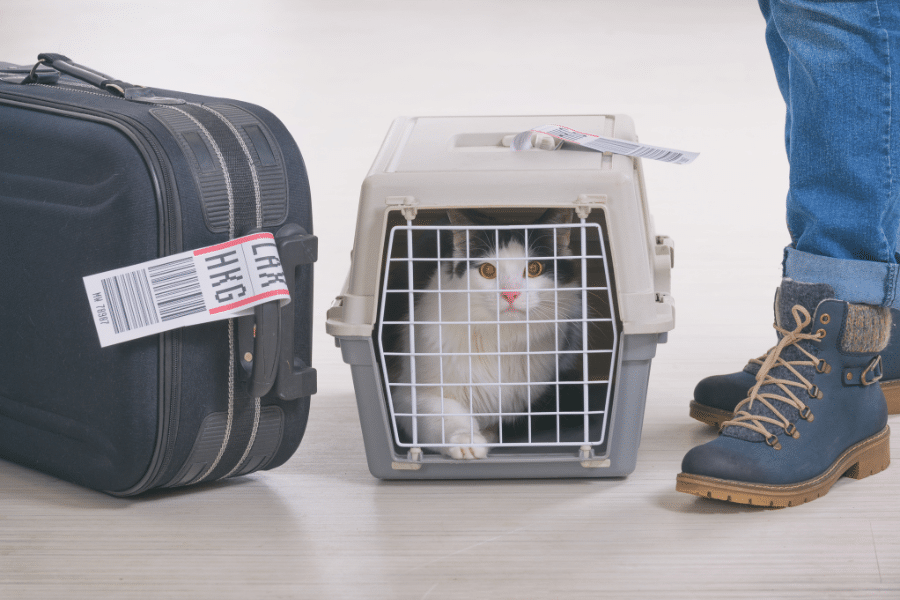Can you bring a cat to Europe? Yes, you can. Moving abroad with cats requires some planning, especially when you are flying overseas to Europe. There are several tips and resources available today that make international travel an easy feat for cat owners and their furry companions.
This article will guide how to prepare your feline friend for the journey so that both of you can enjoy a safe and stress-free trip abroad together.
1. Preparing your cat for travel
Before moving overseas with cats, you must ensure your cats receive up-to-date vaccinations. Pet owners should ensure all required shots are done at least 6 weeks before travel to ensure the necessary paperwork is processed and accepted. This will also give time for the vaccination to kick in and start working when you take your trip.
Second, cats should also have an international health certificate to give evidence that your pet has been vaccinated – each country may require different documentation depending on their specific regulations. You will also need an EU Pet Passport. Lastly, it’s recommended to speak with a vet who specialized in pet travel before booking any flights to have any further questions answered.
Once all of the required paperwork and vaccinations are up-to-date, cats will be able to fly safely in their transport kennels or with an appropriate pet carrier depending on the airline’s stipulations. After double-checking every necessary piece of guidance, your cat is now prepared for international travel.
2. Finding the right mode of transportation
One option for traveling internationally with a cat while maintaining affordability is by taking an airplane, albeit only certain airlines allow the transportation of animals in cargo holds, so research must be done beforehand. The most important factor when making this decision will depend on the cat’s size, as cargo regulations will vary significantly depending on the animal’s weight and size.
Another easy way to transport a pet abroad is through the use of a ship or boat, though this mode remains more expensive than airline travel due to restrictions in access and overall costs obliged by additional shipping fees during the voyage. Animals traveling overseas via sea-based vessels must be secured into appropriate crates not only for their safety but also to abide by governmental regulation standards when crossing maritime borders throughout the journey.
Overall, transporting cats abroad is easier when one takes into consideration safety and related costs for each mode of transportation available, airline versus ship or boat. By taking the time to research and plan, it’s easy to travel through Europe with your cat in tow without any stress or delay at customs.
3. Required documentation and vaccinations
The first step towards moving to Europe with a cat is obtaining an international health certificate and an EU Pet Passport. They both contain similar pieces of information, such as your pet’s personal information, breed type, physical description, and microchip number as well as vaccinations taken.
Cats must be vaccinated properly before entering Europe to protect them against certain illnesses or diseases which can be transmitted through viruses, bacteria, or parasites found within an unfamiliar environment. For instance, cats will be required to be vaccinated for rabies, which many countries legally need for entry into their country.
For a stress-free experience and overall health protection, always consult with a vet before traveling abroad with a pet to make sure both your pet and yourself have all the required paperwork, and vetting records from other countries already visited as well as renew their vaccinations if needed. Although it may take more time than expected, following these important steps will help keep your cat safe during international travels.
4. Cost of moving your cat to Europe
With a little planning and research, traveling to Europe with your cat doesn’t have to be an overly expensive endeavor. Depending on where you are traveling from and other variables such as airline restrictions and quarantine regulations in your destination country, the total costs associated with relocation could range anywhere from a couple of hundred euros up to several thousand.
When calculating what it will cost to move your cat across borders into Europe, some basics need to be considered: travel tickets, crates for transportation purposes, kennel fees at intermediate stops/layovers, veterinary fees for pre-trip checkups and vaccination requirements, mandatory health certificates from the issuing veterinarian as required by your destination country’s regulations and customs clearance costs.
5. Tips for keeping your cat comfortable during the journey
Traveling to Europe with your beloved feline can be an exciting but stressful experience. As cats hate change, the journey may involve some anxious moments for them. However, if you follow these tips for how to move countries with a cat while keeping them comfortable, you can make sure that your cats enjoy a peaceful and comfortable trip:
Prepare for the flight: Make sure that all of your cat’s necessary paperwork is in order before departure, such as their health certificate from the vet stating they are fit to travel and any other documentation required by local authorities or airlines. Also, familiarize yourself with baggage allowances so you know what carries and portable kennels need to meet regulations.
Familiarity: Ensure your cat has plenty of familiar items and smells with them, such as blankets or a favorite toy. This will help reduce their sense of insecurity during the journey by providing some structure to an unfamiliar situation.
Comfort: Invest in good quality carriers that are roomy enough for your cat to move around. Ensure they have somewhere cozy to lie down and padding or textured mats can be helpful too. Consider using herbal calming supplements which may also provide relief from stress on flights.
Water and food: Make sure you bring water for your furry passenger throughout the trip so that dehydration does not set in. Food can be brought too, but try to stick with their familiar diet rather than switching for the journey as cats may need some time to adjust.
Avoid too much activity: Try and keep your cat away from busy areas if possible; excessive movement during flights is often a cause of distress so minimize this where you can by keeping them comfortable and secure in their carrier or portable kennel when traveling.
By following these simple steps, you should be able to make your feline trip across Europe as pleasant as possible.
6. Post-arrival considerations and adjusting to a new environment
Here are some tips for some post-arrival considerations you can make for your pet cat:
- Firstly, it’s important to create an event-free space where the animal feels comfortable. You should consider placing familiar items such as food bowls, toys, or litter trays so they feel more at ease.
- Secondly, getting around new areas and neighborhoods requires special attention. Cats will react differently when in unfamiliar environments, so it’s best to keep them close until the cat becomes comfortable walking around.
- Lastly, spending quality time playing with your pet is essential for adapting to a new environment. You should try to create a safe spot where you can interact with your cats and where they feel reassured.
To ensure that all these are incorporated into daily life, owners should have patience at hand while also offering their pets safety and comfort. Additionally, always keep in mind that although cats are good at finding people in unfamiliar places, they will still find it hard to adjust to a new environment. You should try bonding with your cat while also introducing him or her slowly but surely into the area by exploring the local parks as well as allowing exploration of your new house.
Do you also have a dog? Get informed about moving abroad with dogs, how to efficiently pack for an international move and everything else you need to consider before moving to Europe.



